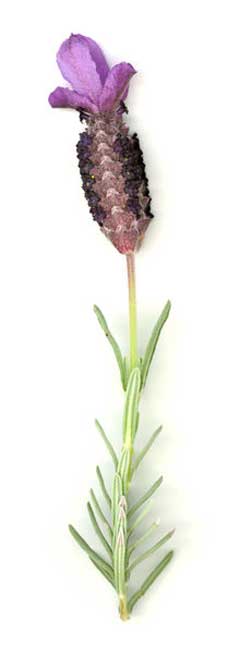 |
|
|
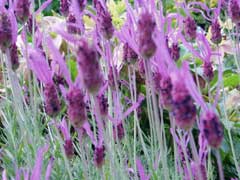 |
| http://commons.wikimedia.org/wiki/User:Serenade |
Translate this page:
Summary
Lavenders are native to the Mediterranean Basin and thrive in hot, dry conditions. Popular Species include English Lavender (L. angustifolia), Spanish Lavender (L. stoechas), and French Lavender (L. dentata). Once established, they are extremely drought-tolerant due to their deep roots. They also thrive in well-drained, sandy, or rocky soils. Spanish Lavender (L. stoechas) and French Lavender (L. dentata) have a pungent, resinous, and medicinal flavour due to their higher camphor content. They are edible but rarely used for cooking. The native range of Spanish Lavender is Medit, including Algeria, Cyprus, France, Greece, Italy, Morocco, Palestine, Portugal, Sicilia, Spain, Tunisia, and Turkey. W. Medit., NE. Tropical Africa, Jordan, Arabian Peninsula. French Lavender is native to W. Medit., NE. Tropical Africa, Jordan, Arabian Peninsula.
Physical Characteristics

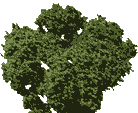 Lavandula stoechas is an evergreen Shrub growing to 0.8 m (2ft 7in) by 0.8 m (2ft 7in) at a medium rate.
Lavandula stoechas is an evergreen Shrub growing to 0.8 m (2ft 7in) by 0.8 m (2ft 7in) at a medium rate.
See above for USDA hardiness. It is hardy to UK zone 8. It is in leaf all year, in flower from May to August, and the seeds ripen from July to September. The species is hermaphrodite (has both male and female organs) and is pollinated by Bees, Lepidoptera (Moths & Butterflies). The plant is self-fertile.
Suitable for: light (sandy), medium (loamy) and heavy (clay) soils and prefers well-drained soil. Suitable pH: mildly acid, neutral and basic (mildly alkaline) soils and can grow in very alkaline soils.
It cannot grow in the shade. It prefers dry or moist soil and can tolerate drought. The plant can tolerates strong winds but not maritime exposure.
UK Hardiness Map
US Hardiness Map
Synonyms
Stoechas officinarum.
Plant Habitats
Cultivated Beds; East Wall. In. South Wall. In. West Wall. In.
Edible Uses
References More on Edible Uses
Medicinal Uses
Plants For A Future can not take any responsibility for any adverse effects from the use of plants. Always seek advice from a professional before using a plant medicinally.
Antiasthmatic Antiseptic Antispasmodic Digestive Expectorant
French lavender has similar medicinal properties to common lavender (L. angustifolia). It yields more essential oil than that species but is of inferior quality[254]. The flowers, and the essential oil derived from them, are antiasthmatic, antiseptic, antispasmodic, digestive and expectorant[4, 44, 61, 238]. It is used internally to alleviate nausea[238]. Externally, the essential oil is used as an antiseptic wash for wounds, ulcers, sores etc and as a relaxing oil for massage[238, 254].
References More on Medicinal Uses
The Bookshop: Edible Plant Books
Our Latest books on Perennial Plants For Food Forests and Permaculture Gardens in paperback or digital formats.
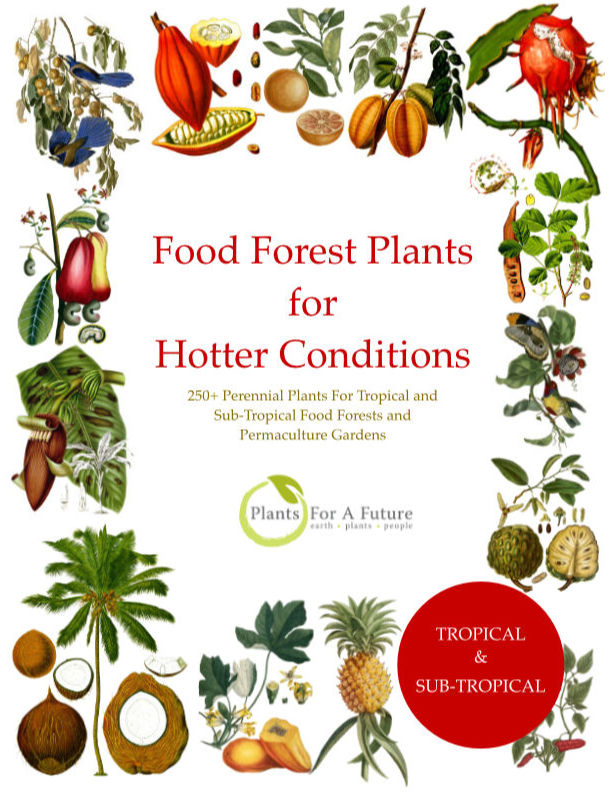
Edible Tropical Plants
Food Forest Plants for Hotter Conditions: 250+ Plants For Tropical Food Forests & Permaculture Gardens.
More
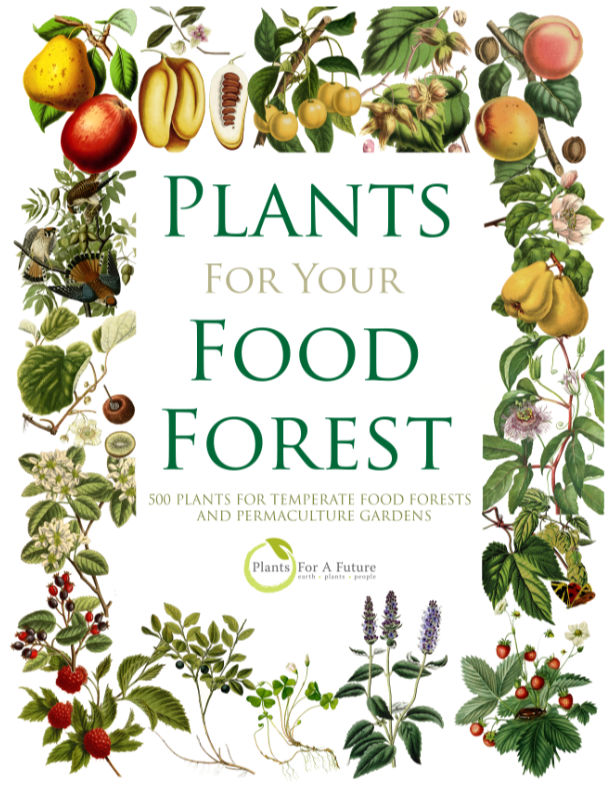
Edible Temperate Plants
Plants for Your Food Forest: 500 Plants for Temperate Food Forests & Permaculture Gardens.
More
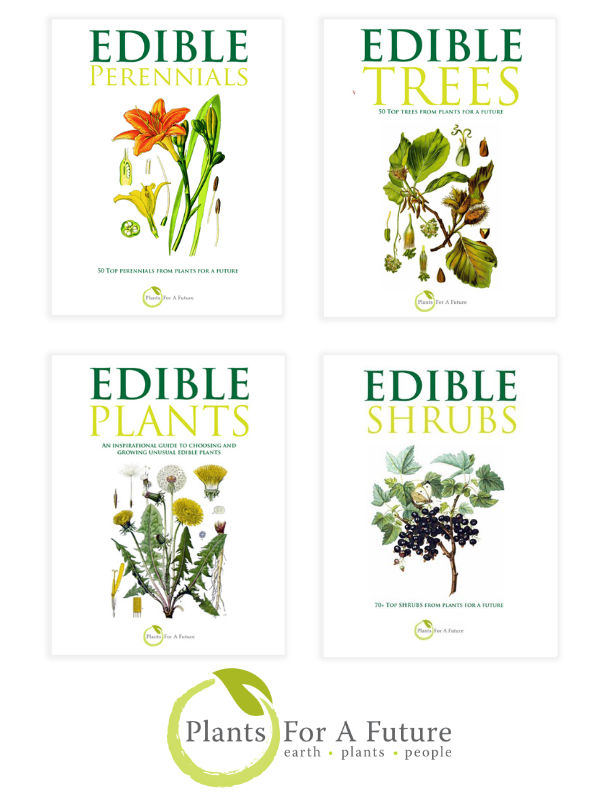
More Books
PFAF have eight books available in paperback and digital formats. Browse the shop for more information.
Shop Now
Other Uses
Essential Incense Pot-pourri Repellent
Agroforestry uses:
Lavender is excellent for attracting pollinators and beneficial insects. It can also be used as a ground cover, hedge, or ornamental plant. Its essential oils have pest-repellent properties, making it valuable in organic farming.
An essential oil is obtained from the flowers - used in soap making, perfumery, medicinally etc[46, 61]. When growing the plant for its essential oil content, it is best to harvest the flowering stems as soon as the flowers have faded[245]. The aromatic leaves and flowers are used in potpourri, as an insect repellent in the linen cupboard etc. [89, 148, 238]. They are also used as a strewing herb in churches etc[4]. The flowering stems, once the flowers have been removed for use in potpourri, etc., can be tied in small bundles and burnt as incense sticks[245]. 1. Nectary - Flowers rich in nectar and pollen:
Yes, Lavender flowers are well-known for being rich in nectar and pollen, which attract a wide range of pollinators, including bees, butterflies, and other beneficial insects.
2. Wildlife - Food (Fruit, Seeds, Leaf litter, Shelter, Nesting, Roosting):
No – While lavender attracts many insects for its nectar, it does not produce fruit or seeds widely consumed by birds or mammals. Its foliage is not typically dense enough to provide wildlife shelter, nesting, or roosting sites.
3. Invertebrate Shelter (Overwintering sites, Leaf litter, Groundcover):
Yes – Lavender’s dense, woody stems and leaf litter can offer shelter and overwintering sites for invertebrates, especially beneficial insects.
4. Pest Confuser (Smell):
Yes – Lavender’s strong scent is often used as a natural pest deterrent, confusing and repelling pests such as moths, mosquitoes, and flies.
Special Uses
Attracts Wildlife Food Forest Scented Plants
References More on Other Uses
Cultivation details
Succeeds in almost any soil so long as it is well-drained and not too acid[1, 200]. Prefers a sunny position in a neutral to alkaline soil[1, 200], growing well on chalk[11]. When grown in rich soils the plants tend to produce more leaves but less essential oils[4]. Grows well in a hot dry position[166]. Established plants are drought tolerant[190]. When growing for maximum essential oil content, the plant must be given a very warm sunny position and will do best in a light sandy soil, the fragrance being especially pronounced in a chalky soil[245]. Hardy to between -5 and -10°c[184], it is often killed in severe winters in Britain[11]. Plants are not very long-lived and soon become straggly unless pruned. Any trimming of the plant is best done in spring and should not be done in the autumn since this can encourage new growth that will not be very cold-hardy[200]. Polymorphic[200]. A good bee plant, also attracting butterflies and moths[30]. The flowering spike has showy infertile flowers to attract insects at the top of the stem and small fertile flowers beneath[190]. A good companion for most plants[54], growing well with cabbages[14]. Lavender is typically harvested in mid to late summer when the flowers are in full bloom.
Lavender flowers in late spring to summer, depending on the species and growing conditions. Lavender is a moderate grower, typically reaching maturity within 2 to 3 years. Plants usually grow to a height of about 1 to 3 feet (30 to 90 cm), depending on the species and growing conditions.
References Carbon Farming Information and Carbon Sequestration Information
Temperature Converter
Type a value in the Celsius field to convert the value to Fahrenheit:
Fahrenheit:
The PFAF Bookshop
Plants For A Future have a number of books available in paperback and digital form. Book titles include Edible Plants, Edible Perennials, Edible Trees,Edible Shrubs, Woodland Gardening, and Temperate Food Forest Plants. Our new book is Food Forest Plants For Hotter Conditions (Tropical and Sub-Tropical).
Shop Now
Plant Propagation
Seed - sow spring in a greenhouse and only just cover the seed[4]. It usually germinates in 1 - 3 months at 15°c. When large enough to handle, prick the seedlings out into individual pots and grow them on in the greenhouse or cold frame for their first winter, planting them out in late spring after the last expected frosts. Cuttings of half-ripe wood 7 - 10cm with a heel, July/August in a frame. Usually very east, a high percentage will root within a few weeks[78]. Grow them on in the greenhouse for their first winter and plant them out in late spring after the last expected frosts. Cuttings 7cm with a heel succeed at almost any time of the year[1]. Layering.
Other Names
If available other names are mentioned here
Native Range
TEMPERATE ASIA: Cyprus, Israel, Lebanon, Syria, Turkey EUROPE: Greece (incl. Crete), Italy (incl. Sardinia, Sicily), Spain (incl. Baleares), France (incl. Corsica), Portugal AFRICA: Spain (Canarias), Portugal (Madeira Islands), Algeria, Morocco, Tunisia
Weed Potential
Right plant wrong place. We are currently updating this section.
Please note that a plant may be invasive in one area but may not in your area so it's worth checking.
Conservation Status
IUCN Red List of Threatened Plants Status :

Growth: S = slow M = medium F = fast. Soil: L = light (sandy) M = medium H = heavy (clay). pH: A = acid N = neutral B = basic (alkaline). Shade: F = full shade S = semi-shade N = no shade. Moisture: D = dry M = Moist We = wet Wa = water.
Now available:
Food Forest Plants for Mediterranean Conditions
350+ Perennial Plants For Mediterranean and Drier Food Forests and Permaculture Gardens.
[Paperback and eBook]
This is the third in Plants For A Future's series of plant guides for food forests tailored to
specific climate zones. Following volumes on temperate and tropical ecosystems, this book focuses
on species suited to Mediterranean conditions—regions with hot, dry summers and cool, wet winters,
often facing the added challenge of climate change.
Read More
Expert comment
Author
L.
Botanical References
11200
Links / References
For a list of references used on this page please go here
Readers comment
© 2010, Plants For A Future. Plants For A Future is a charitable company limited by guarantee, registered in England and Wales. Charity No. 1057719, Company No. 3204567.